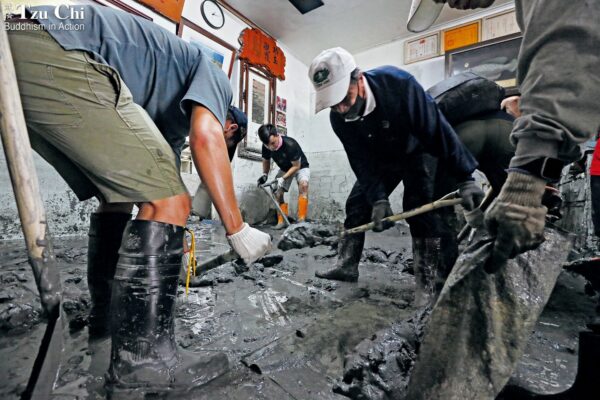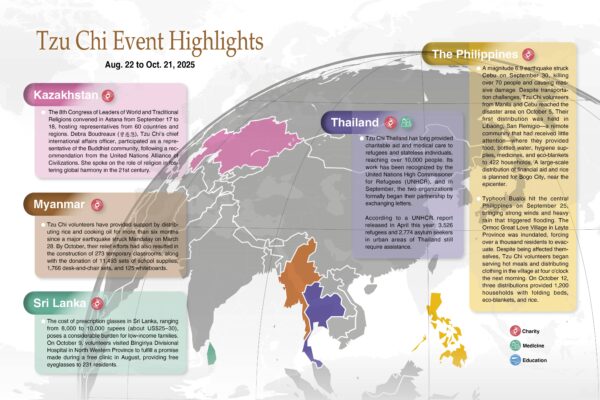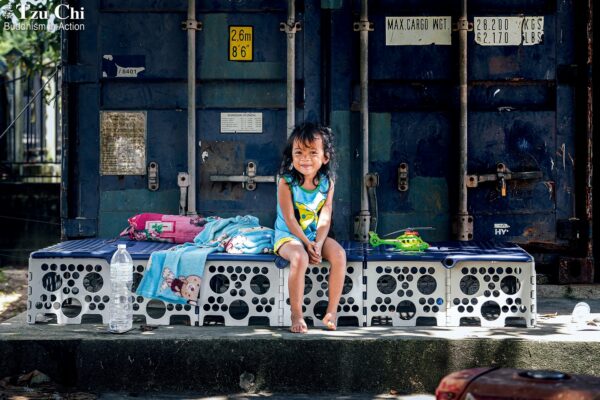Compiled by Li Wei-huang
Information provided by Bian Jing
Translated by Siri Su
Tzu Chi collaborates with Yushuzhou Hope Charity to help young Tibetan patients afflicted with scoliosis obtain medical treatment.
Leaving his hometown in Garze Tibetan Autonomous Prefecture in Sichuan Province, China, Nima embarked on an 800-kilometer (497-mile) journey to Chengdu, the provincial capital. After getting off the train, he headed straight to 416 Hospital. Although he was 20 years old, he stood only 145 centimeters (4’9’’) tall due to severe scoliosis.
Scoliosis is a condition in which a person’s spine has an abnormal curve, sometimes resembling an S shape. It occurs in about three percent of the population, but the cause of scoliosis has been elusive. Surgery is required in extreme cases. After corrective surgery, a metal ring is surgically fastened around both the patient’s head and waist, connected by four supporting rods. Traction applied through the head ring gradually reduces the spinal curvature, allowing patients to stand taller.
Nima underwent three corrective operations, gradually gaining the ability to stand straight within nine months of hospitalization, increasing his height to 165 centimeters (5’5”). Afterward, he was only required to wear orthoses for rehabilitation, which are devices designed to support or modify an injured or malformed part of the body. His greatest relief came in the form of improved breathing: “Breathing is no longer a struggle,” he said.
Nima’s father, Tapo, recalled his child being born with a noticeable spinal curve, which worsened with age. He feared his son might pass away at any moment. But if Tapo was so concerned, why did he wait until Nima was 20 years old to seek treatment?
Challenges hampering medical care
Yushuzhou Hope Charity (YHC), based in Yushu Tibetan Autonomous Prefecture, Qinghai Province, has long been helping young Tibetan patients with scoliosis receive medical care. According to Geding Pengcuo, head of YHC, such patients face challenges in accessing treatment due to their parents’ limited health awareness, inadequate access to related information, and physical distance from advanced medical resources.
Without proper treatment, a patient suffering from scoliosis may develop thoracic deformities, which can compress their nerves or impact the functions of their heart and lungs, potentially leading to respiratory failure. The average life expectancy for untreated patients is 45 years. Early diagnosis and treatment are crucial. Surgery offers the best outcomes, minimizes rehabilitation challenges, and significantly reduces medical expenses.
In Beijing and Chengdu, there are three hospitals that specialize in treating severe scoliosis patients. YHC combines medical and charitable resources, regularly inviting specialized doctors to travel to the Qinghai-Tibet Plateau for scoliosis screenings and arranging medical treatment for patients. Dr. Zhou Lijin (周立金), an orthopedic surgeon at Beijing Chaoyang Hospital, asserted, “Many Tibetans don’t know what scoliosis is or where to find medical treatment. To help them, we must reach out to the remote regions they live in, regardless of the distances.” Amidst their efforts, there have been instances where patients’ families had such limited understanding of the condition that doctors had to make multiple visits before convincing them to seek medical care.
In 2019, through YHC, Tzu Chi volunteers in Chengdu first came into contact with Tibetans afflicted by the condition in neighboring Qinghai Province. The volunteers witnessed firsthand the struggles of these young individuals, who lived at altitudes of 3,000 to 4,000 meters (9,840-13,125 feet). They observed the challenges they faced in accessing medical care due to limited resources, misconceptions, or economic difficulties, and clearly saw how this could profoundly impact their futures. A Tzu Chi care team was thus formed and joined YHC’s Caring for Tibetan Children project to support this group of children and adolescents through their demanding and costly medical journey.
The journey from Chengdu, about 500 meters above sea level, to Yushu Prefecture in Qinghai, with an average elevation of 4,200 meters, presents significant challenges for Tzu Chi volunteers. Every step or ascent requires caution to prevent altitude sickness. Sometimes, even the doctors themselves have to wear oxygen masks during screenings.
After screening, YHC arranges for scoliosis patients in need of surgery to go down the mountains for treatment. Generally, more severe cases of scoliosis require several corrective surgeries, with treatment spanning from six months to one year. The substantial medical expenses, exceeding 31,000 U.S. dollars, are partially covered by the government with additional support from Tzu Chi. Volunteers also assist with the patients’ daily needs during their hospitalization.
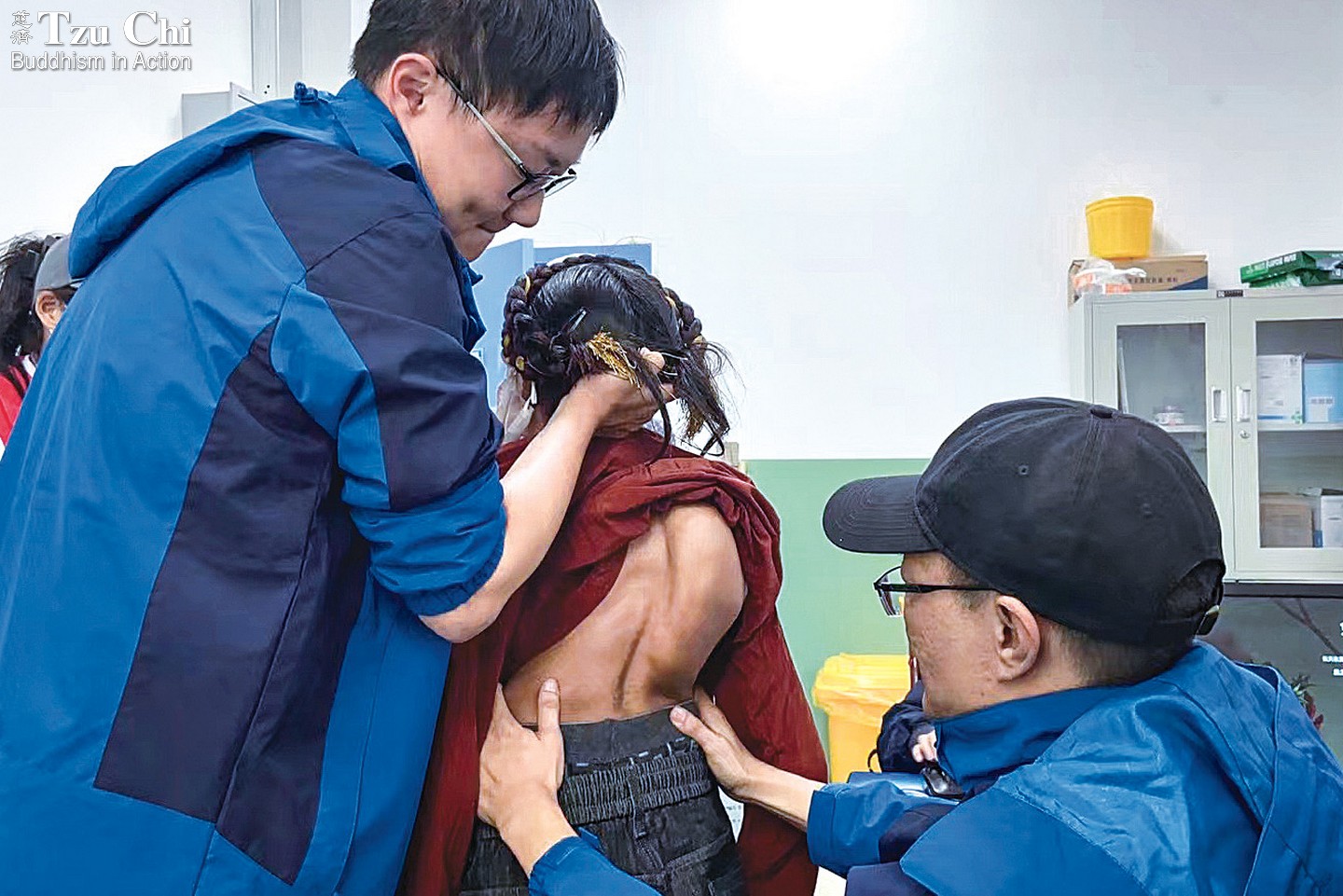
Health workers assess the condition of a young Tibetan suffering from scoliosis.
Courtesy of Tzu Chi Hualien headquarters
Care during hospitalization
On August 26, 2019, the first three patients receiving aid from Tzu Chi arrived in Chengdu for treatment, accompanied by their families; among them was Nima. The largest group in the following five years arrived on October 23, 2023: 39 people—consisting of 13 scoliosis patients, their family members, and YHC volunteers—endured a grueling 36-hour train journey from Tibet before reaching Chengdu.
Tzu Chi volunteers’ companionship typically begins with a warm welcome at the train station. Whether they are from western Sichuan, Qinghai, or Tibet, most patients and their families are visiting Chengdu for the first time. Volunteers hope to help them settle in as quickly as possible. They thoughtfully prepare Tibetan tea to accompany meals, assist with hospital admission procedures, and provide toiletries, buckets, and other daily necessities. They also supply suitable clothing according to the season. Due to differences in dietary habits between Tibetans and Han Chinese, the families of most patients choose to co-rent small kitchens to prepare their food. Volunteers ease their burdens by bringing them cooking and dining ware from their own homes.
Volunteer Ji Yahong (紀亞紅) mentioned that while a few school-going children can speak some Mandarin, their parents face language barriers. Such differences in language, culture, and living habits have proven to be significant obstacles in the process of seeking treatment. Since the families require assistance even in communicating with the medical staff, they need all the help they can get.
Tzu Chi volunteers visit patients every Tuesday throughout their extended hospital stays, helping them and their families cope with various challenges. Such visits continued uninterrupted even during the COVID-19 pandemic. When the children are emotionally affected due to pain from treatment, volunteers guide them to cultivate gratitude and actively cooperate with the treatment. Since they may encounter difficulties washing their hair after the head ring is installed, volunteers prepare toothbrushes, sponges, and face cloths and carefully clean their scalps. When parents worry about family members back home and feel down, volunteers listen to and comfort them, or prepare hot soup or dumplings for them to lift their spirits. Most of the young patients are unable to attend school due to their illnesses, so volunteers help them learn Mandarin.
A noticeable number of individuals among the patients are monastics. Geding Pengcuo explained to Tzu Chi volunteers that due to their religious beliefs, many Tibetans believe that serious illnesses are a result of karma from past lives. As a result, children born with congenital diseases or physical disabilities are often sent by their parents to monasteries for ordination, with the belief that doing so can resolve their karmic debts and alleviate their pain and suffering.
Bazang was one such monastic. He didn’t receive medical care until he was 30 years old. As a result, his medical journey was more challenging. Unlike others who left the hospital on foot after treatment, he required a year of rehabilitation after leaving the hospital before regaining mobility. Volunteer Wang Lin (王琳) confessed that it wasn’t until she helped Bazang change into surgical attire that she truly grasped the impact of scoliosis. “I was truly shocked to witness his deformed and twisted spine,” She remarked. “Treatment is absolutely essential for these patients.” Whenever volunteers see children discharged from the hospital after successful treatment, their joy matches that of parents.
Tzu Chi volunteers, in partnership with YHC, have provided support for more than 200 young Tibetans with scoliosis and their families over the past five years. In March of this year, 60 children were simultaneously undergoing treatment at two hospitals, marking the highest number to date. Tzu Chi and YHC also conduct screenings for Tibetan children and adolescents with congenital heart disease and congenital hip dislocation and help those severely in need of treatments receive care at hospitals in Chengdu, Xining, Beijing, and other locations. Wherever these individuals receive treatment, local Tzu Chi volunteers are there to provide support.
So, what’s Nima’s current situation? After recovering, he decided to stay and work in Chengdu. Now, when new patients arrive for treatment, he helps as an interpreter and assists volunteers with hospital admission procedures. Having gone through a similar journey, Nima’s presence offers encouragement to these young patients as they eagerly await their chance to recover.
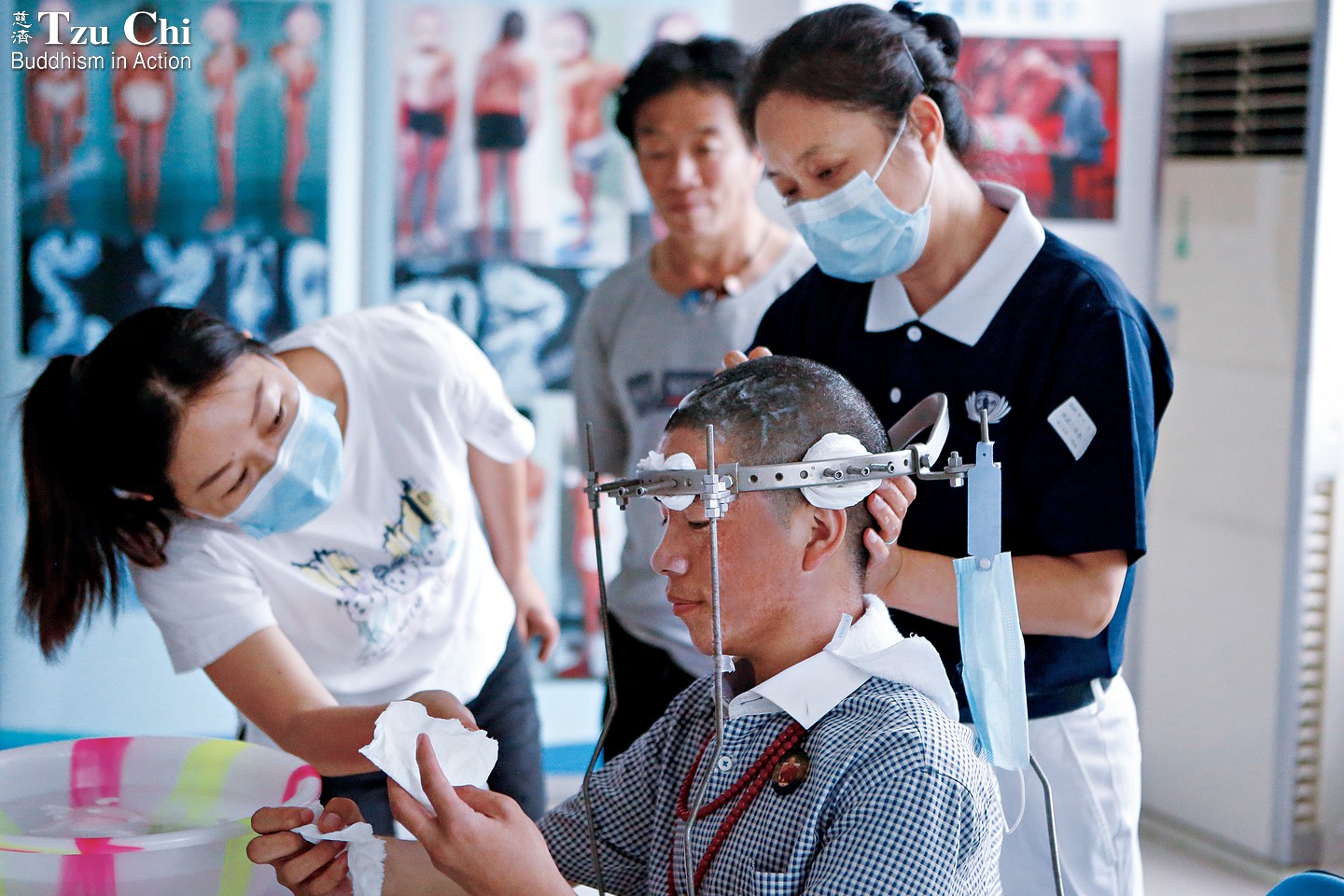
A volunteer washes a scoliosis patient’s hair at 416 Hospital in Chengdu, Sichuan Province, China.
Bian Jing

